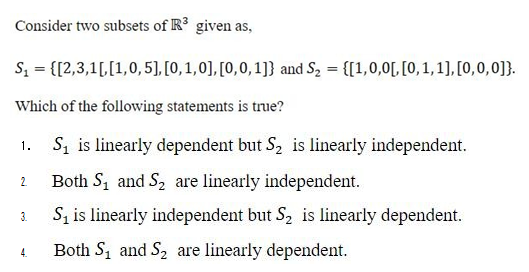Question
Car 'A' is at point 'P' while car 'B' is at point 'Q'.
Both the cars started travelling towards each other at the same time such that they met each other after 8 hours. However, if both car start at the same time but travel in the same direction, then they will meet after 40 hours. If the speed of the slower car is 60 km/h, then which of the following statement(s) is/are true? I. Distance between point 'P' and 'Q' is 1500 km. II. While travelling in opposite directions, the faster car covers 720 km by the time they meet. III. The faster car is twice as fast as the slower car.Solution
Let the distance between points 'P' and 'Q' be 'd' km. Let the speed of faster car and slower car be 'x' km/h and 'y' km/h, respectively. ATQ; {d/(x + y) } = 8 ........ (I) {d/(x - y) } = 40 ...... (II) So, 40 X (x - y) = 8 X (x + y) Or, 40x - 40y = 8x + 8y Or, 32x = 48y So, (x/y) = (3/2) So, speed of faster car = 60 X (3/2) = 90 km/h So, 'd' = (90 + 60) X 8 = 1200 For 'I': Distance between 'P' and 'Q' = 1200 km So, 'I' is false. For 'II': Distance covered by faster car when travelling in opposite directions = 1200 X (3/5) = 720 km So, 'II' is true. For 'III': Speed of faster car = 90 km/h And, speed of the slower car = 60 km/h Speed of faster car = 1.5 x speed of slower car So, 'III' is false.
If in a right angle triangle ABC, Angle B is a right angle. AB = 20 cm, BC= 21 cm if BD is perpendicular to AC find the length of BD?
Find the area of triangle having sides 7 m, 24 m, and 25 m.
If O is the orthocentre of ΔABC , if ∠ BOC = 1000 then what is the measure of ∠ BAC?
In ΔABC, PQ is parallel to BC If AP: PB= 3:5 and AQ= 3 cm, AC is equal to?
In ∆ABC , G is the centroid , AB = 12 cm, BC= 16 cm and AC = 20 cm , find GD, where D is the mid-point of BC?

In ∆ABC, AB = 5cm, BC = 10cm, and AC = 13cm then find out the value of cos A.
- Length of a chord in a circle of radius 'r' cm, is 18 cm and distance between chord and centre of the circle is 40 cm. Find the value of (3r + 7).
If O is circumcentre of acute angled triangle ABC, if ∠ OBC = 150 then ∠BAC = ?
In ∆ABC, AB = 5cm, BC = 6cm and AC = 10cm then find out the value of cos A?
Relevant for Exams:


